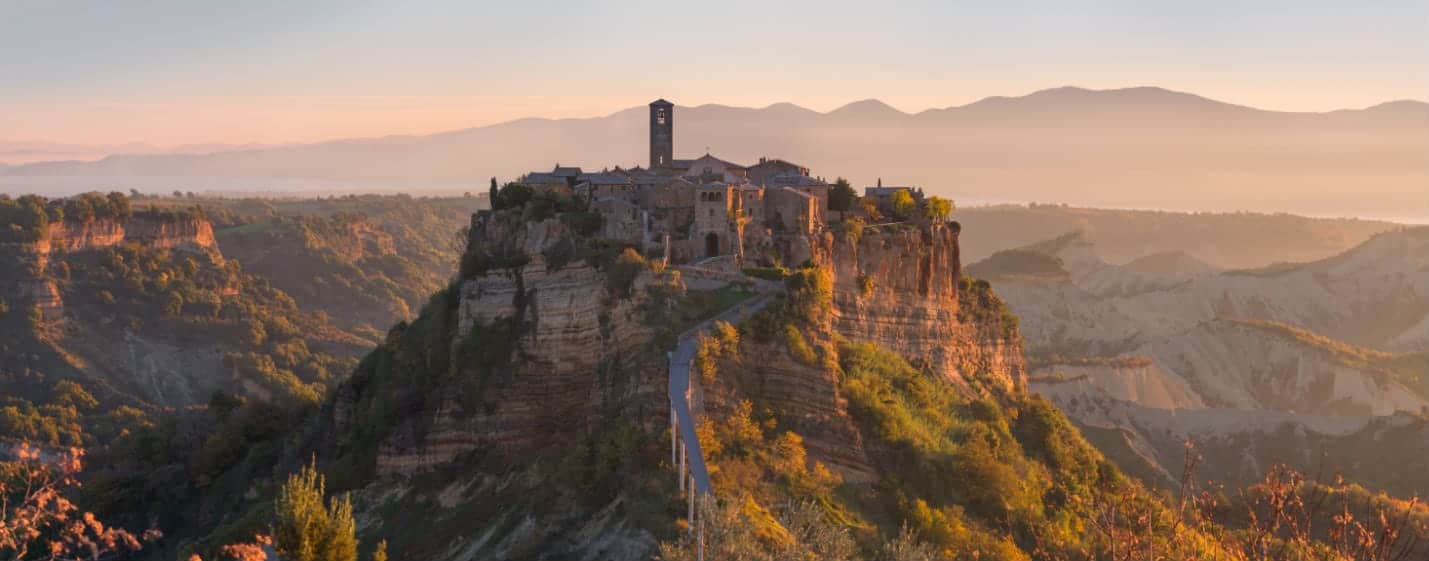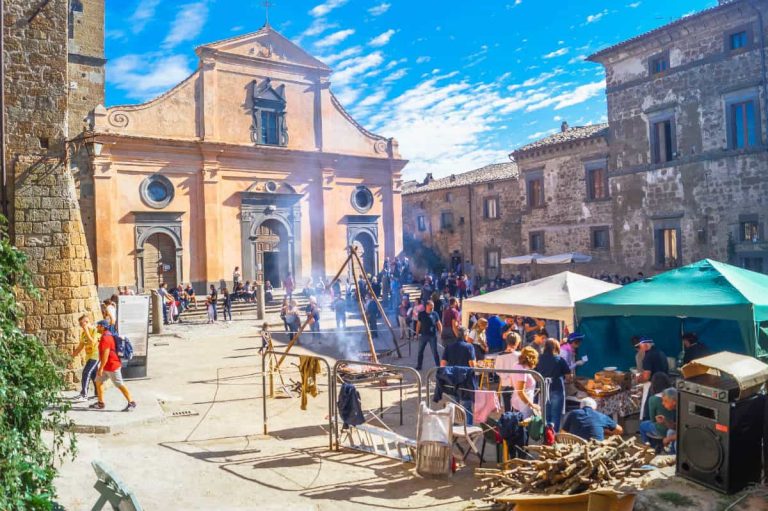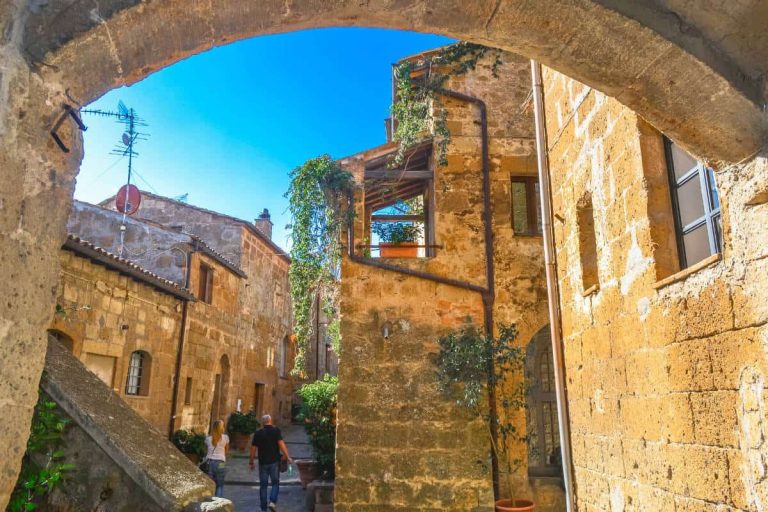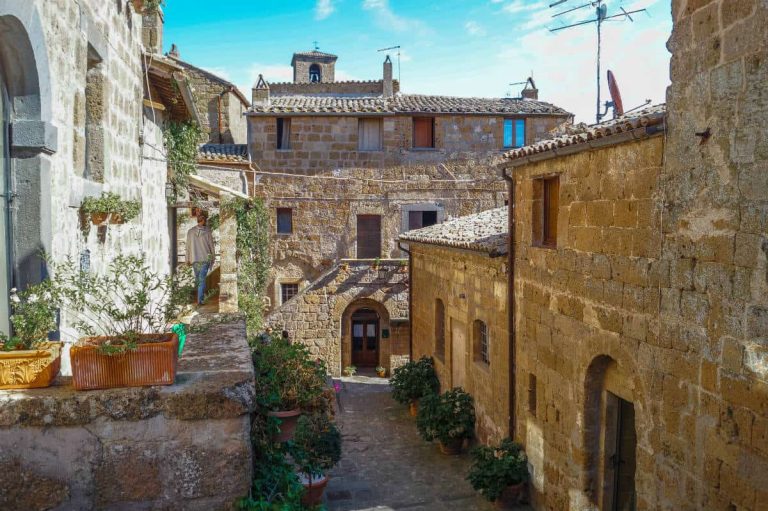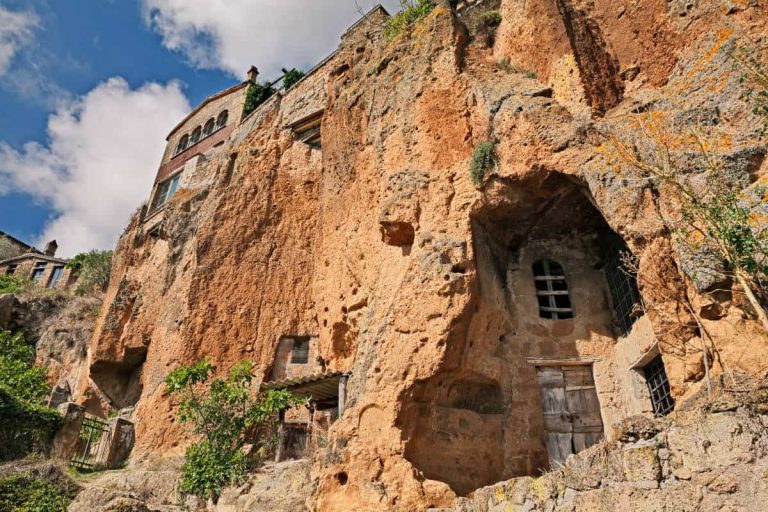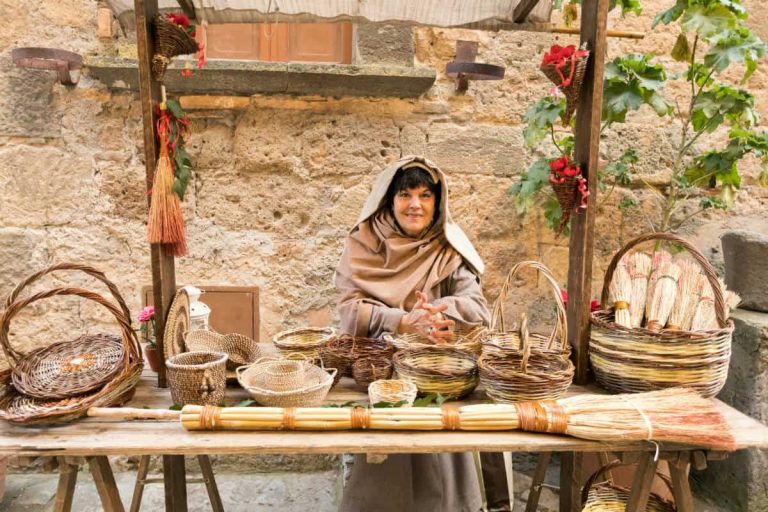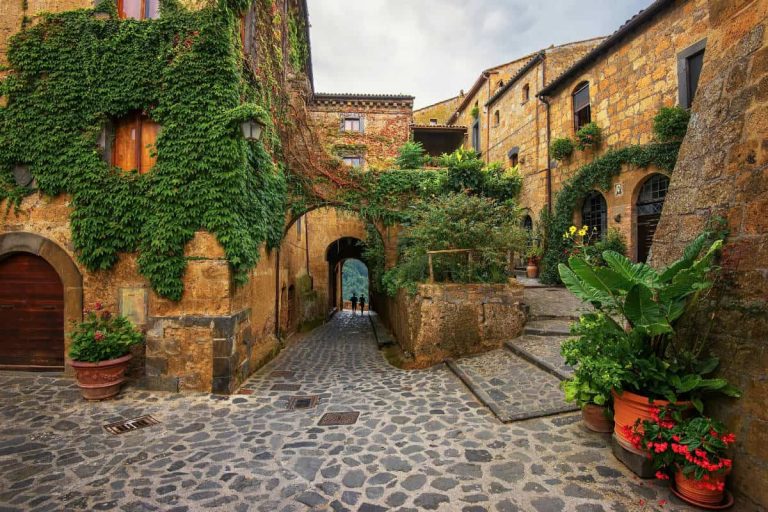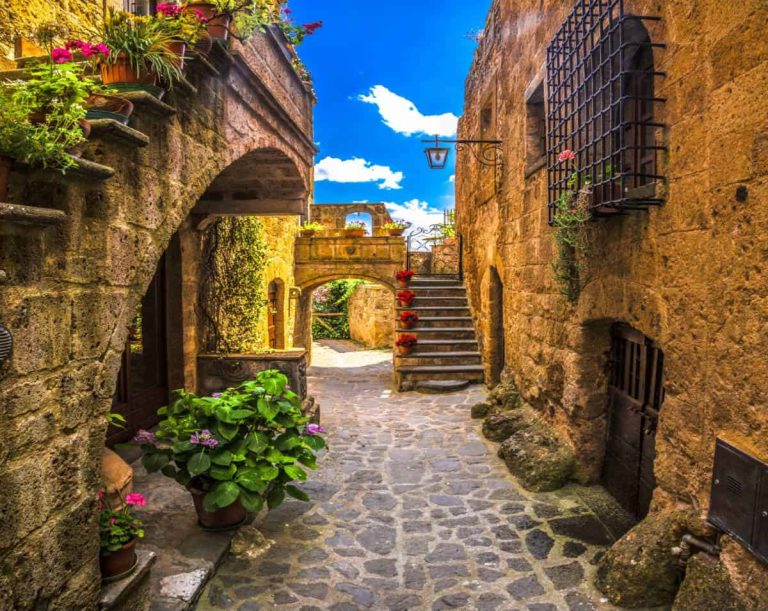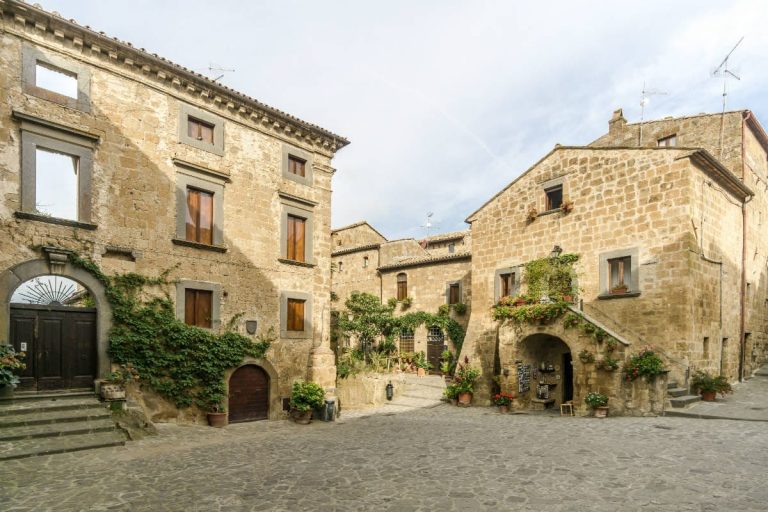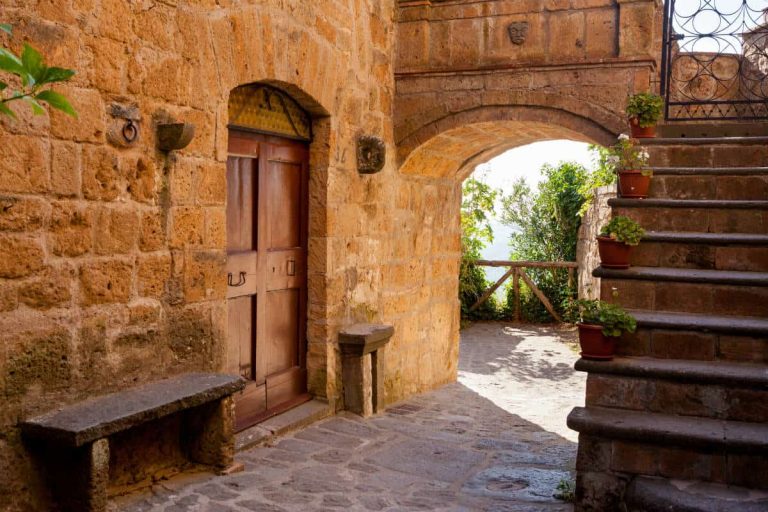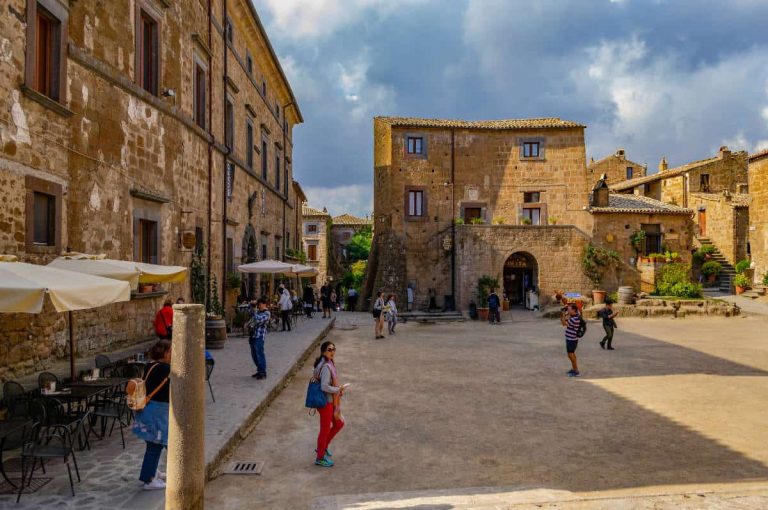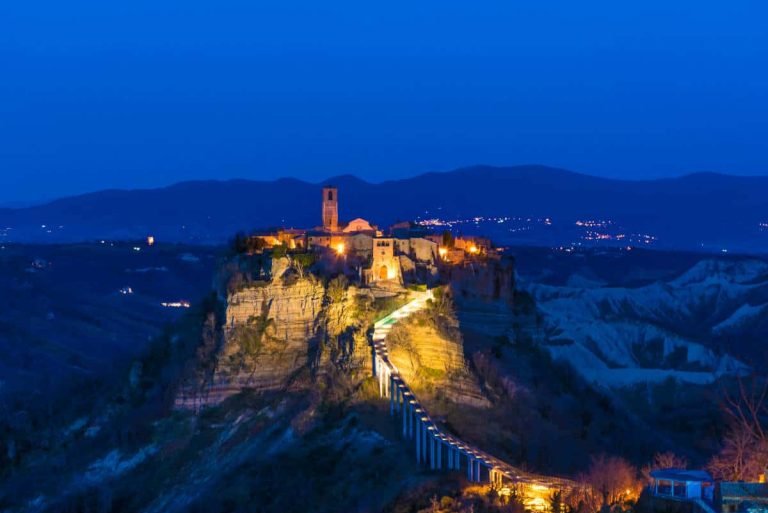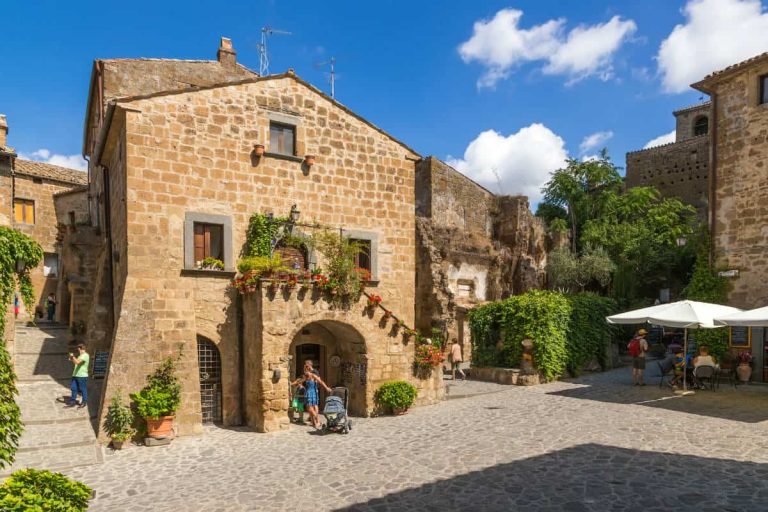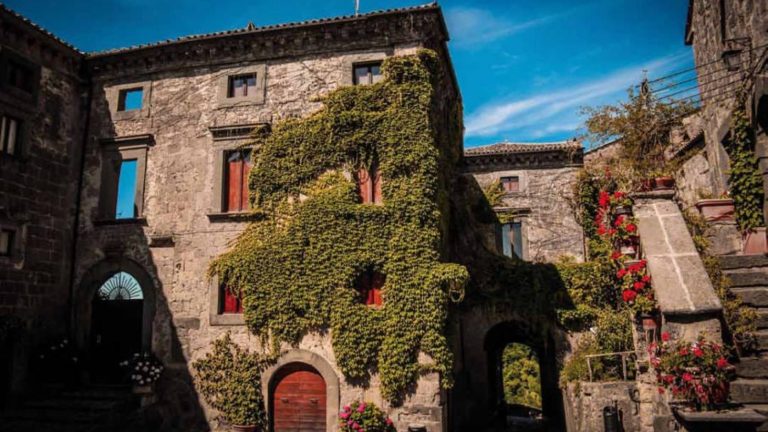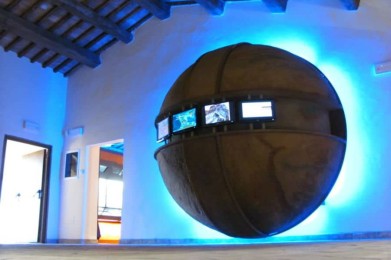History
The numerous Etruscan tombs found on the site suggest that the area where Civita di Bagnoregio stands today has been inhabited since the Etruscan era. The area was crossed by waterways and was close to important communication routes such as the one that connected the nearby Lake Bolsena to the Tiber: soon the Romans, then the Goths and the Lombards, arrived, until the Frankish domination that led to the lordship of many noble families such as the Monaldeschi.
In the thirteenth century Civita di Bagnoregio prospered as a free municipality until the plague of 1221 decimated its population. At the behest of Pope Alexander VI Civita di Bagnoregio ended up under the power of the Apostolic Delegation of nearby Viterbo.
The two earthquakes of 1695 and 1794 jeopardized the existence of the town and, amid landslides and landslides, the population abandoned it in favor of Rota.
After being the scene of the historic Battle of Bagnorea between the Pope's soldiers and the Garibaldi soldiers, Civita di Bagnoregio became part of the kingdom of Italy in 1870.
An inexorable state of abandonment followed until tourism revived the fortunes of this splendid town: you must know that some scenes of films such as "The two colonels" with Totò and "The enchanted city" by the great Japanese director were shot here Hayao Miyasaki.
Entrance to the village
You will have certainly heard of Civita di Bagnoregio as "the dying city". The reason is that the layer of friable clay present at the base of the tuff cliff, over the centuries, is constantly eroded by the waters of the streams, the wind and the rains, endangering the stability of the village. The same spectacular Valle dei Calanchi that surrounds it has been shaped thanks to erosions: the badlands, specific to the place that will appear to you like waves in an arid sea of stone, are clay ridges that can reach great heights and important depressions.
To reach Civita di Bagnoregio you have to cross a pedestrianized concrete bridge, at the end of which you will find yourself in front of the Porta di Santa Maria. This masonry entrance is dominated by a beautiful loggia and is decorated on the sides by two small lions with human heads in the jaws, in memory of the expulsion from the village of the hated Monaldeschi in 1494. With a little attention you will be able to see some engraved cross, perhaps left by pilgrims returning from the Holy Land or by some Templar.
The enchanted village
Once through the Porta di Santa Maria you will find yourself in a town where time has stopped, where the late medieval style is almost intact. You will walk in silence, under the gaze of some sly cat, among artisan shops, elegant peperino portals, ivy-clad houses and Renaissance buildings decorated with profferli and mullioned windows. Among the latter stands the Palazzo degli Alemanni, which is also home to the "Geological and Landslide Museum" where you can learn more about the geological history of the village.
The heart of Civita di Bagnoregio is Piazza San Donato: do not expect a paved space because here you will find only red soil, just as it was in the distant fifteenth century. In the square there is the old Cathedral of San Donato, whose Renaissance facade of the '500 betrays the medieval origin of the church. Inside, in addition to a fine fresco from the Perugino school, there is a wooden crucifix which, according to Christian tradition, in 1499 would have communicated to a faithful the end of the plague. Every Good Friday he is carried in a procession between appearances in period costumes and solemn songs to the Annunziata Church of Bagnoregio, and then returns to Civita by midnight to preserve it from earthquakes and landslides.
If you reach Civita di Bagnoregio in the first days of June you will witness the ancient Palio della Tonna which takes place right in Piazza San Donato, among jockeys on the back of their donkeys who challenge each other by turning in circles to win the Palio.
Between caves and good food
Wandering through the alleys of Civita di Bagnoregio there will be many belvedere that you will meet, from which you can enjoy spectacular views over the Valle dei Calanchi. Looking closely, you will not struggle to see many underground caves excavated in Etruscan times: reaching the "Museum of Ancient Civitas" you will find yourself wandering in hypogean environments where peasant life took place in the 30s. Here are preserved Etruscan and Roman finds, but also oil mills, plows, spades, scales and other utensils of daily life, as well as dining rooms and bedrooms faithfully reproduced in some caves.
Much more mystical is the Grotta di San Bonaventura where the little Giovanni di Fidanza is healed by San Francesco d'Assisi who, after the miracle, pronounces the words "Bona Ventura": for this reason the young man, when he becomes a Franciscan, adopted the name of Bonaventura.
Before leaving Civita di Bagnoregio stop in one of the characteristic restaurants of the village and enjoy the typical cuisine of the ter

